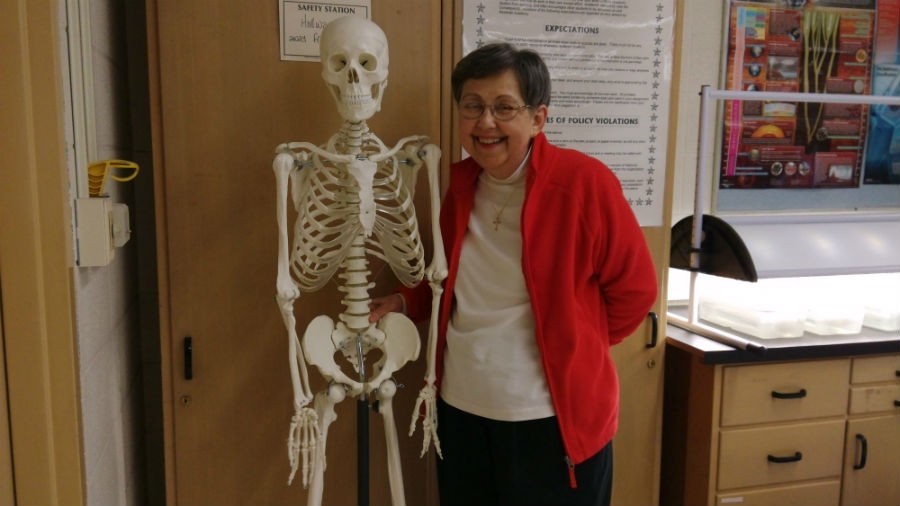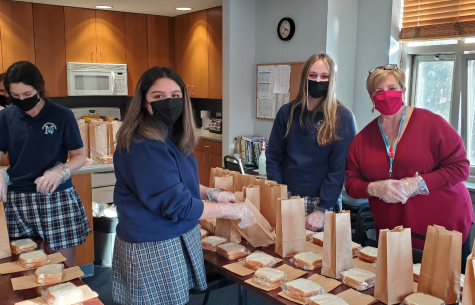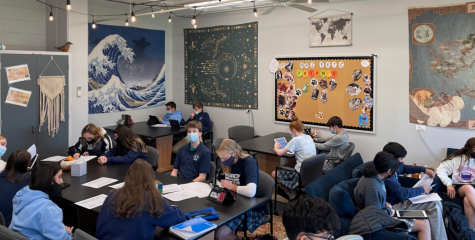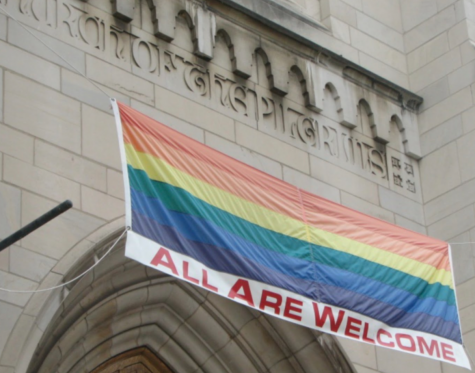Biology department shares history of real skeleton
March 17, 2016
There is one human being who takes his Nazareth pride and Roadrunner spirit to the next level. Unknown to all he meets, yet, beloved among those students with which he interacts; this person has stood the test of time.
Literally.
Hidden in the back closet of Biology teacher Mrs. Sheila Emmett’s classroom, a real human skeleton patiently waits to surprise students during their study of anatomy as part of the biology curriculum.
So who is this ‘Mr. Bones’? And how did he end up at Nazareth Academy?
Emmett says, “I do not know the origin of this skeleton nor how it got here. When I started to teach at Nazareth, I found it in the closet of the classroom, left behind.”
Emmett emphasizes the age of this skeleton, pointing out the yellow, deteriorated bone structure and dried costal cartilage that connects the sternum to the ribs.
The skeleton’s pelvis, ilium (pelvic bone), and femur bone function as indicators of sex. The vertically-aligned ilium and underlying femurs confirm the skeleton’s gender. The male pelvic region differs from the female in that the female’s pelvis must be spread out to prepare for the birth canal.
Mr. Bones might also be a composite skeleton – meaning, his skeleton might be composed of other of humans’ bones as well.
The mystery surrounding Mr. Bones is compounded by the question of his enigmatic identity. However, his eternal loyalty to Nazareth keeps his memory in the hearts of Biology students who observe him.
No matter what his story is or how he arrived at Nazareth, his role as a supplementary learning tool helps students to visualize body structures and appreciate the complexity of the human being.











